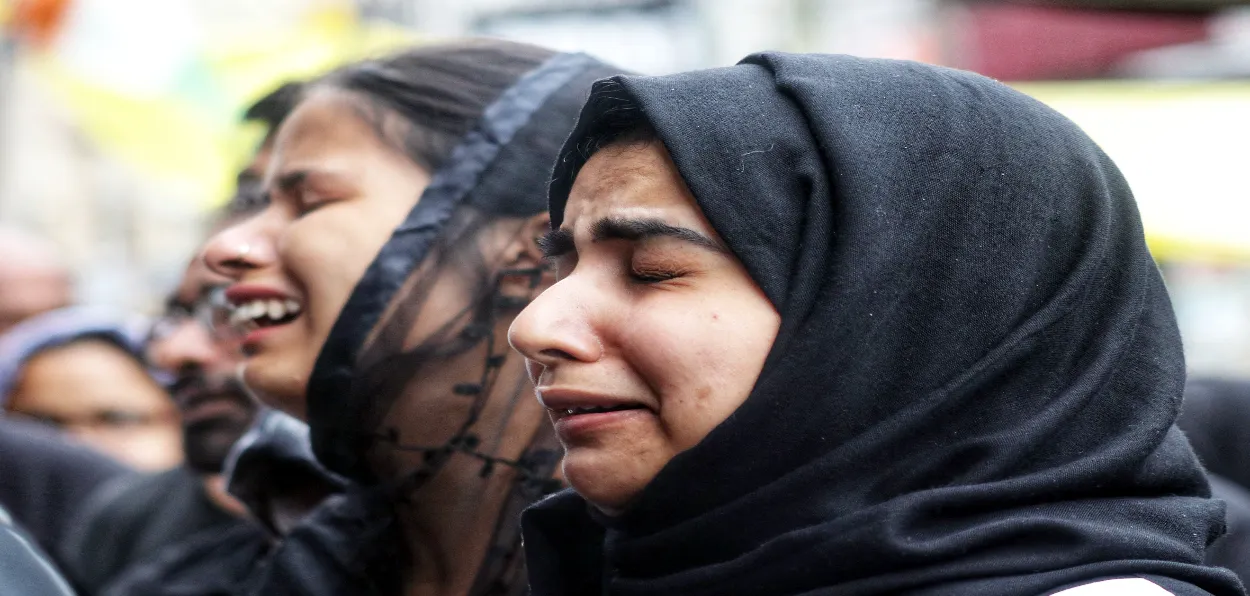
Eman Sakina
The month of Muharram holds profound spiritual, historical, and emotional significance for Shia Muslims. It is not only the beginning of the Islamic lunar year but also a period of deep mourning and remembrance centered around one of the most heart-wrenching events in Islamic history — the Tragedy of Karbala.
Friday Musings
For Shia Muslims across the world, Muharram is a time of intense devotion, reflection, and public expression of grief for the martyrdom of Imam Hussain ibn Ali, the grandson of the Prophet Muhammad.
This sacred month becomes a spiritual journey that connects the faithful to the values of sacrifice, justice, and resistance to tyranny. Through various rituals, gatherings, and symbolic acts of mourning, Shia Muslims reaffirm their commitment to the principles Imam Hussain died for.
Tragedy of Karbala
The core of Muharram’s significance for Shia Muslims lies in the battle of Karbala, which occurred on the 10th of Muharram, 61 AH (October 680 CE). Imam Hussain, along with a small group of family members and loyal supporters — numbering just over 70 — stood up against the oppressive Umayyad caliph Yazid ibn Muawiyah, who had seized power in violation of Islamic ethics and principles.
Imam Hussain refused to legitimize Yazid's corrupt rule by giving him the pledge of allegiance. In response, Yazid’s forces surrounded him and his caravan in the barren plains of Karbala. Despite unbearable thirst, immense suffering, and the certain knowledge of death, Imam Hussain refused to surrender, choosing martyrdom over submission.
On the 10th of Muharram, known as ‘Ashura’, Imam Hussain , along with many members of the Prophet’s family (including his six-month-old infant Ali Asghar) and companions, was brutally martyred. The women and children of the Prophet’s household were taken captive and marched to Syria in chains.
For Shia Muslims, Karbala is not just a past event; it is a living legacy. It symbolizes the eternal struggle between truth and falsehood, justice and tyranny, and faith and corruption.
Imam Hussain's stand at Karbala was not for political gain or personal ambition. It was a moral uprising aimed at preserving the true essence of Islam. His sacrifice reminds believers of standing firm against injustice, no matter the cost; the importance of preserving faith even in times of extreme hardship; the need to resist tyranny, oppression, and moral decay and courage, patience, and selflessness in the face of adversity.
Imam Hussain declared: "I have not risen to spread evil or to show off. I only desire to bring reform to the Ummah of my grandfather (Prophet Muhammad). I want to enjoin good and forbid evil."
How do Shia Muslims observe Muharram?
Observance of Muharram among Shia Muslims is marked by a deep sense of mourning and devotion, especially during the first ten days, culminating on the day of ‘Ashura. Here are some of the ways it is commemorated:
Majalis (Gatherings of Mourning) Every day and night during the first ten days of Muharram, and especially on ‘Ashura, majalis (mourning assemblies) are held in homes, mosques, and community centers. Religious scholars and speakers recount the story of Karbala, highlighting the courage, values, and sacrifices of Imam Hussain and his companions.
These sessions include Recitation of elegies (marsiyas and nawha): Heartfelt poetry in praise and remembrance of the martyrs.
Lectures (bayan): Religious and historical sermons that draw lessons from Karbala.
Crying and grieving (matam): Outpouring of emotion as a way to express love and sorrow.
Processions (Juloos): Public processions are an integral part of Muharram, especially on ‘Ashura and Arbaeen (the 40th day after ‘Ashura). Devotees walk in the streets, often barefoot, chanting slogans like: "Ya Hussain!" "Labbayk Ya Hussain!"
These processions symbolize unity and solidarity with the oppressed and re-enact the grief of the family of the Prophet.
Acts of Mourning (Matam and Latmiyah): Many participants in Muharram processions engage in matam — rhythmic chest-beating and recitation of dirges — as a physical expression of grief and empathy with the suffering of Ahl al-Bayt (the family of the Prophet).
In some cultures, self-flagellation with chains or blades (tatbir or zanjeer zani) is practiced, though it remains a subject of scholarly debate and is discouraged in many Shia circles today. The emphasis increasingly is on donating blood or performing social service as a more productive and spiritually meaningful expression of mourning.
Black Clothing and Symbolic Decorations: Shia Muslims wear black clothing throughout the month of Muharram as a symbol of grief. Homes, mosques, and Imambargahs (Shia places of worship) are often draped in black flags and banners bearing the names of Hussain, Abbas, Zainab, and other figures of Karbala.
Fasting and Spiritual Acts: Although not obligatory, many Shia Muslims fast on the 9th and 10th of Muharram in remembrance of Imam Hussain and as a form of spiritual cleansing.
Charity, Quranic recitation, and supplications (duas)—especially Dua Al-Ashura, Ziyarat Ashura, and Ziyarat of Imam Hussain—are highly encouraged.
Arbaeen – The Culmination of Mourning: While the intensity of mourning is greatest during the first ten days, it continues for 40 days, ending with Arbaeen, the day commemorating the return of Imam Hussain’s family from captivity and the visit of his grave by companions. Millions of pilgrims walk to Karbala in what is now considered the world’s largest annual peaceful pilgrimage.
Numerous Sunni scholars, Christian leaders, and non-Muslim historians have paid tribute to Imam Hussain's selflessness and bravery. As the Indian leader Mahatma Gandhi once said: "I learned from Hussain how to be oppressed yet victorious."
ALSO READ: From stones to solutions: Wajahat Farooq Bhat’s journey of reshaping Kashmir’s future
The observance of Muharram, especially in the Shia tradition, is a deeply spiritual journey that connects the heart to the message of Karbala, reignites the soul’s yearning for divine justice, and reminds the world that "every day is Ashura, and every land is Karbala.".
